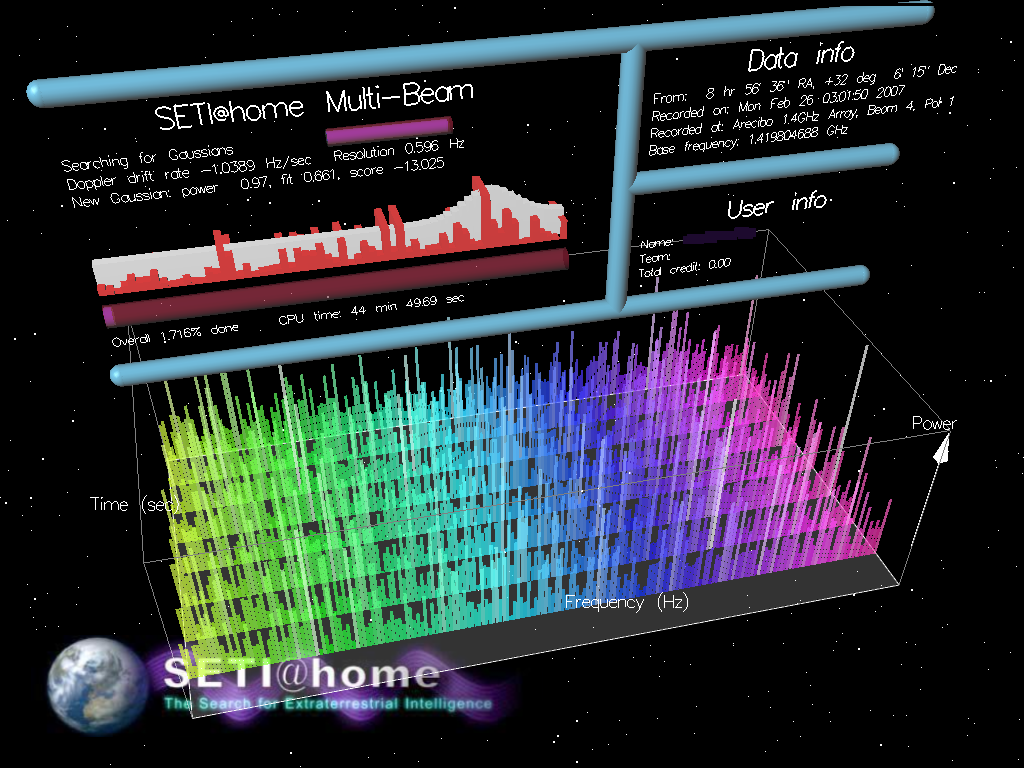The hunt for aliens
This is the stuff of Sci-fi legends, scouring the galaxy for our Milky Way brethren.
There is one problem, though. The search, by all accounts, has been slow and unfruitful. SETI@home estimates that the project has analysed around 2% of the night sky observable from Earth after 17 years. To be fair, space is a big place and computers are getting more powerful by the day.
The SETI@home project lead estimates that based on the Drake equation we should expect to find signals from intelligent alien life by at least 2030.
The Drake equation
R*: the average rate of star formation in our galaxy
fp: the fraction of formed stars that have planets
ne: the average number of planets per star that can potentially support life
fl: the fraction of those planets that actually develop life
fi: the fraction of planets bearing life on which intelligent civilised life has developed,
fc: the fraction of these civilisations that have developed communications that emit radio signals
L: the length of time over which such civilisations release detectable signals
So where are the aliens?
Drake’s first attempt at solving this equation gave a result of between 1000 and 100,000 intelligent life-bearing planets in the Milky Way. Of course, changing any of the inputs in the formula can give you wildly different results – anything between one and many millions. This is the crux of the problem with the Drake equation. Because results can vary so massively depending on your initial assumptions, the equation becomes nothing more than a litmus test for people’s imagination and hopes.
So if that’s the case, why am I even bothering with SETI@Home? I work with statistics every day, and one thing I know is that you can get them to tell you anything you want. That’s not, however, an invitation to give up entirely.
The most pessimistic Drake equation result cannot be smaller than one (for Earth) and has a reasonable chance of being greater than one. If there is intelligent alien life out there, even only one other planet, the SETI program has a reasonable chance of detecting them over a very long timeframe.
Running the program uses very little data, and let’s face it, of all the uses of my PC, contributing to a scientific endeavour is the least harmful. Besides which, what kind of sci-fi geek doesn't dream of being the first to find evidence of alien life.
Find out more at Seti@Home

Comments
Post a Comment